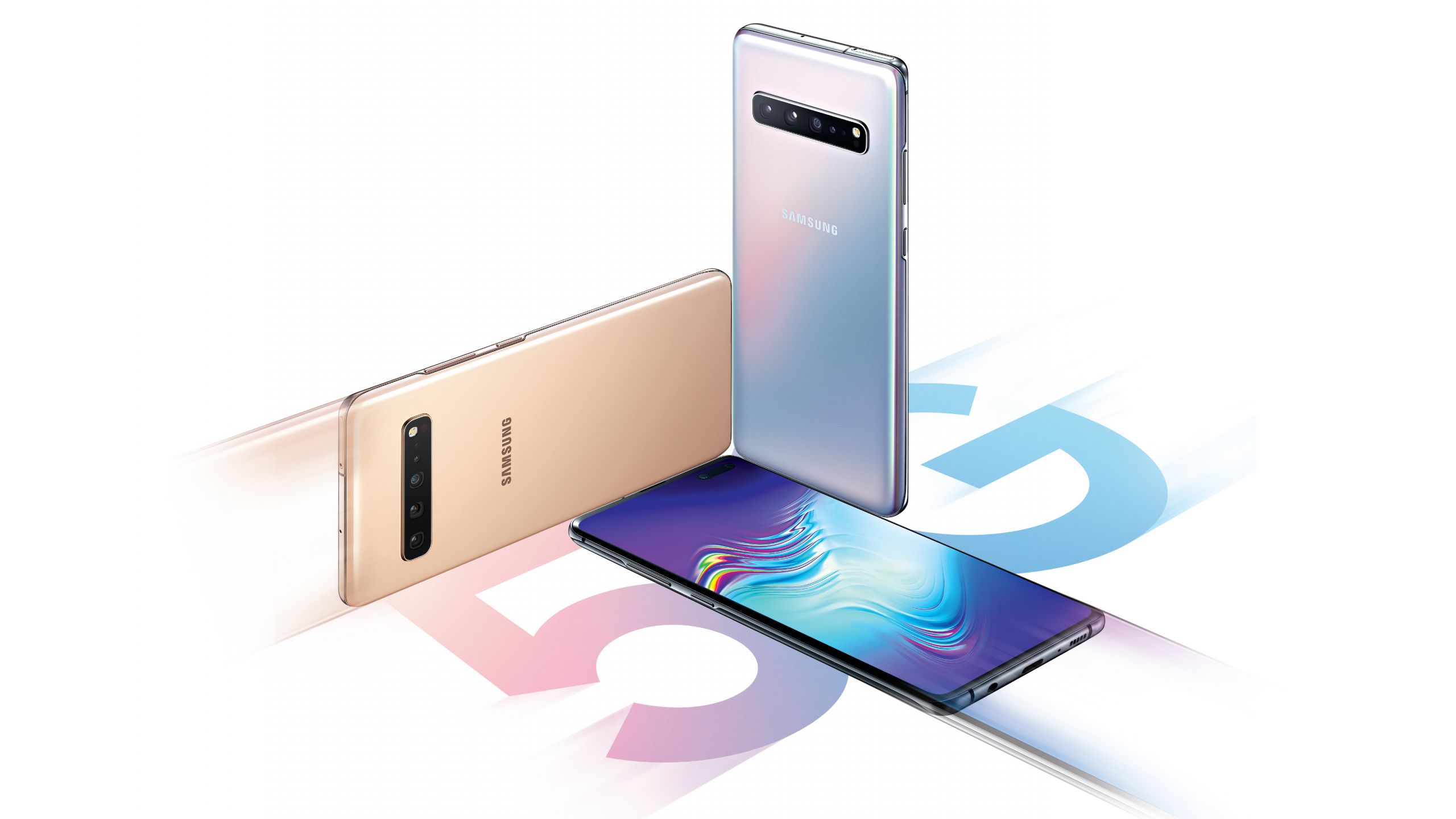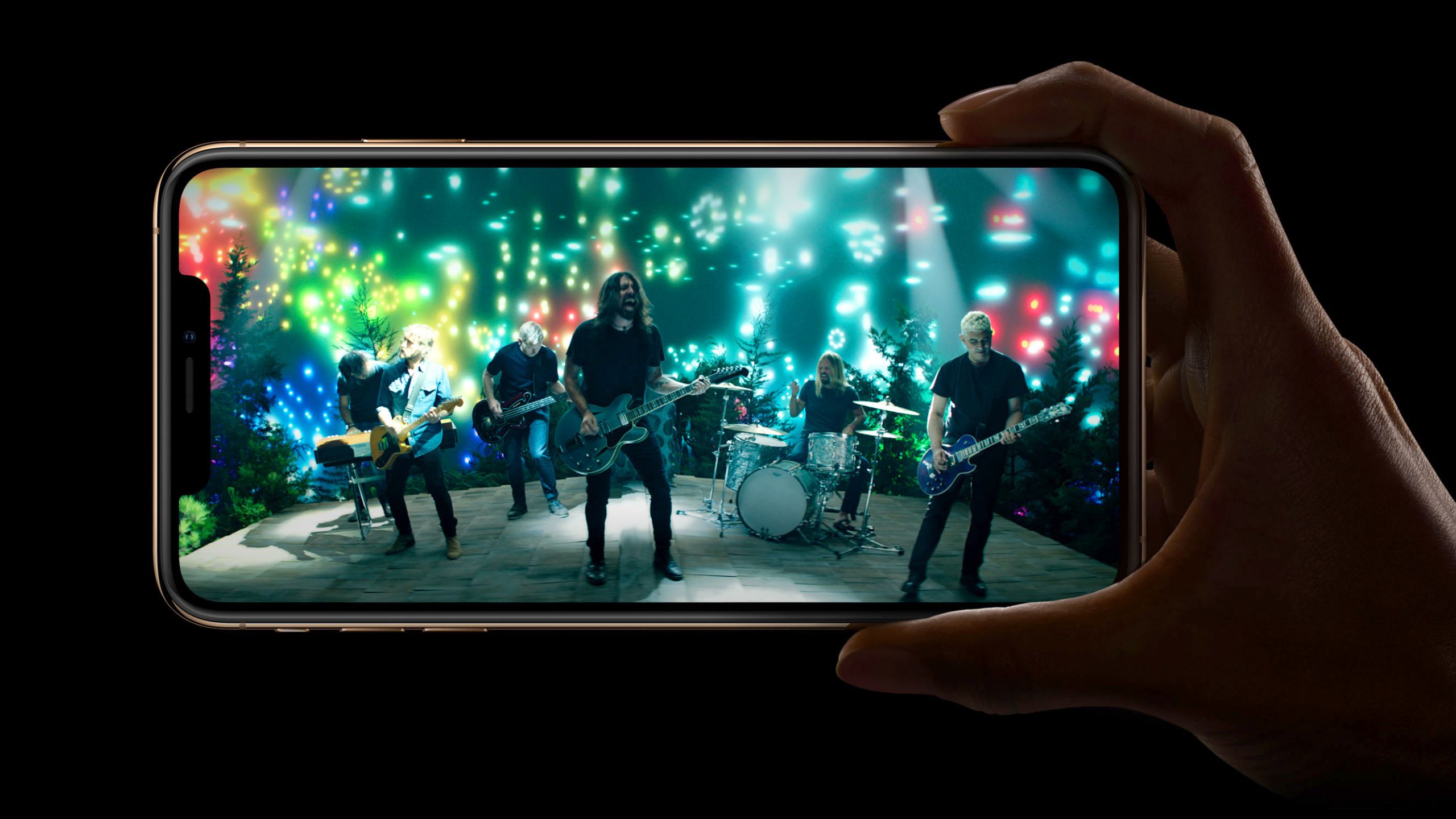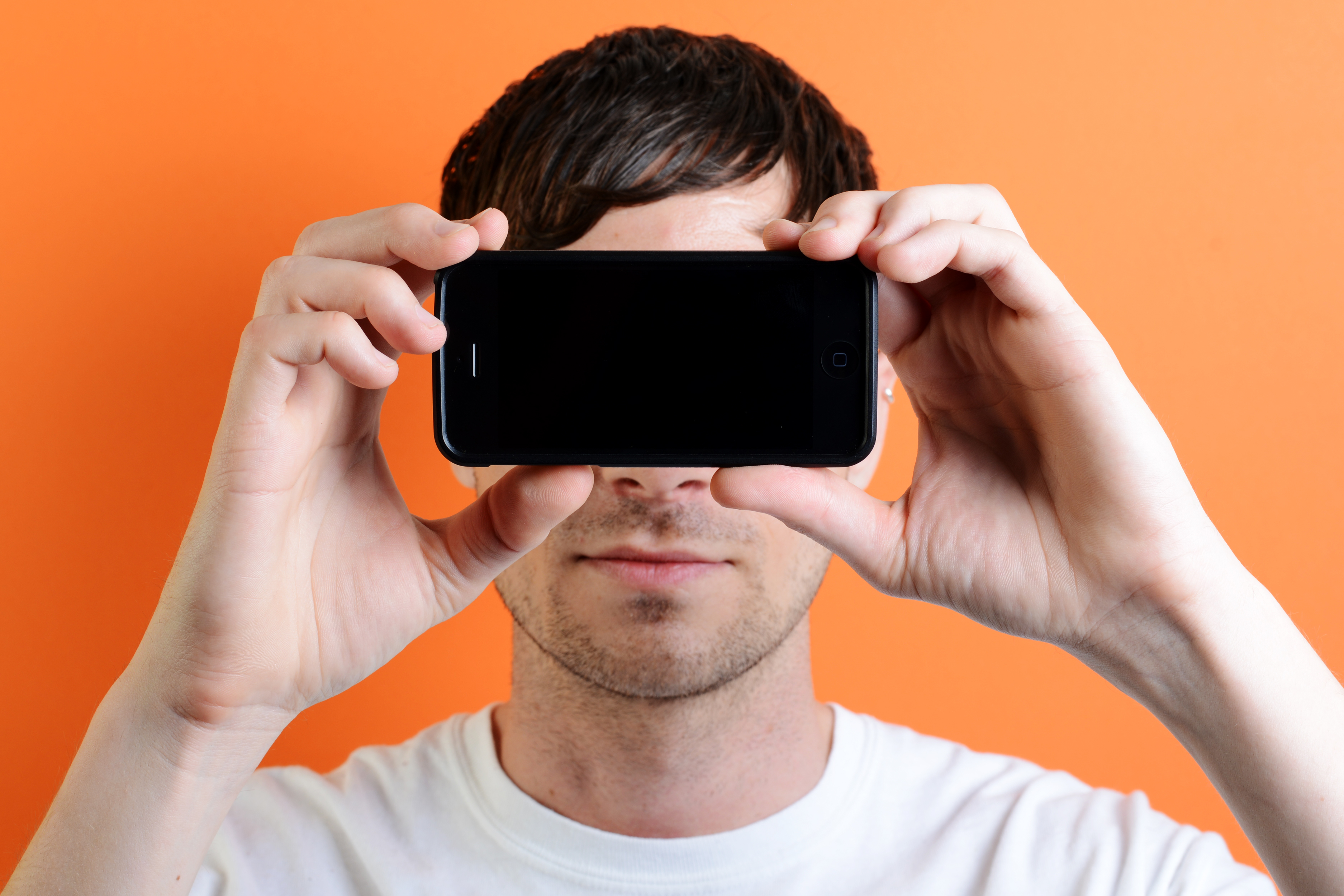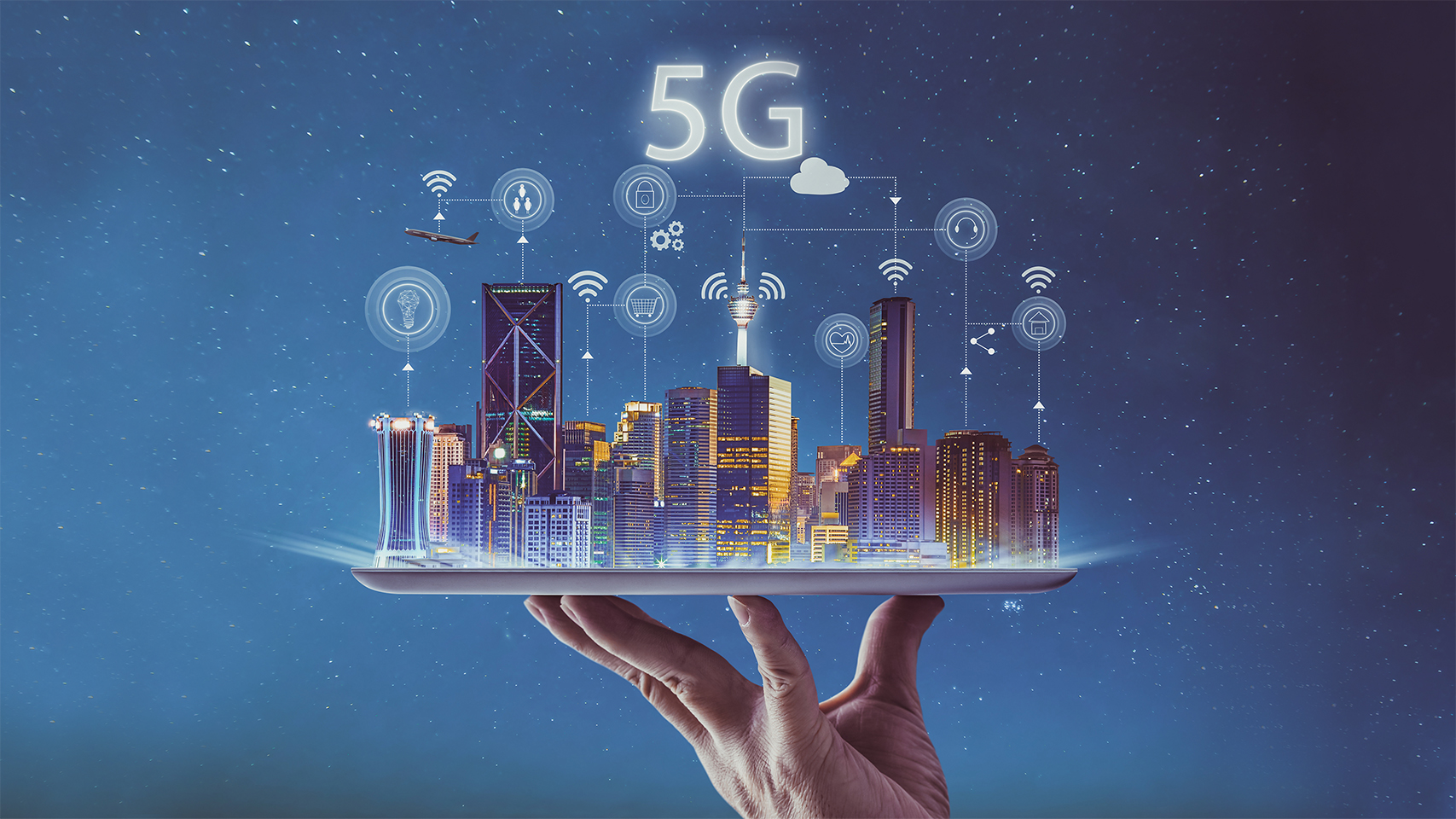5G is coming and the question “What is 5G and how is it better?” is the one on everyone’s lips right now. There’s so much to understand and take in regarding 5G – from 5G speeds and 5G phones, to when the best cell phone providers (such as 5G Verizon and 5G AT&T) will launch their consumer products – that it is difficult to get a grip on what all this new technology will mean to you.
Well, that is where Top Ten Reviews comes in. We’ve created this 'What is 5G?' article to explain exactly what 5G is and how it works (including a comparison of 5G vs 4G). We'll also explain when it will arrive, how you can get 5G, and what you can do with it.
We’ve also got information about 5G towers, 5G routers, 5G WiFi, and excitingly for Apple fans, 5G iPhones, too. Lastly, we also address the question of whether there are any dangers associated with using 5G.
What is 5G?
5G is the hot new wireless transmission standard being introduced as a successor to 4G LTE, which itself replaced the previous standard, 3G. 5G delivers the potential for faster data transfer speeds with lower latency and stronger overall connections, utilising a different type of radio waves, millimetre waves (more on that later), to transfer information incredibly quickly and securely between compatible hardware.
5G vs 4G: What is the difference?
Most phones today run using 4G networks, with 4G communication towers and handsets widespread in most built-up areas, and these utilize certain radio wave frequencies to transmit data.
5G requires the same type of general setup, with 5G devices running off 5G networks delivered by 5G towers, however the crucial difference is that 5G makes use of much shorter radio waves than 4G to carry data, the aforementioned millimeter waves (mmWave).
Now, as a general rule, the shorter the frequency of a radio wave the more data it can carry, so with 5G using very compact millimeter wave technology, 5G allows a lot of data to be transmitted and received much more quickly than 4G’s longer waves are capable of.
These 5G transmissions are more powerful within their range, meaning more consistent connections to 5G devices, even in areas of major network activity. The only downside to 5G is that the range of its millimeter waves is markedly less than the longer radio waves used in 4G, however this fact is largely rendered inconsequential as 5G antennas have the scope to be much smaller and, therefore, have more of them installed in a certain area.
So, in summary, 5G delivers superior speeds in most conditions to 4G (1.4 Gbps median speed for 28 GHz mmWave is theoretically deliverable on 5G compared to a theoretical maximum of only 300 Mbps on 4G), has lower latency (the time it takes to pass a message from sender to receiver), and enables a stronger and more stable connection between devices. So far so good.

What types of 5G are there?
This is where the waters begin to get muddied. 5G as described in the section above is true 5G, with 5G towers broadcasting 5G networks, and those networks’ transmissions handled by millimeter wave radio waves. A 5G-enabled device, such as a mobile phone with a 5G modem, can then make the most of the enhanced speed and connection strength to the max.
However, as the 5G technology to make this structure work is still very much in the infancy of its rollout, certain bodies within the communications industry are using the term “5G” to describe other, less advanced technologies, be that 5G devices or 5G networks.
A good example is AT&T’s recent rebranding of its 4G LTE mobile network as “5GE”, which stands for “5G Evolution”. Seeing 5G in there would make you think that you’re using a full-fat 5G network, with proper millimeter wave technology, but actually the 5GE network uses 4x4 MIMO tech instead to deliver what could be described as an enhanced version of 4G LTE instead. So it's not really 5G at all.
Equally, lots of phones are currently being announced and released in 2019 that describe themselves as 5G phones, and as they have a 5G-compatible modem they are technically. However, it is important to note that these modems are not integrated but auxiliary to the main processor, which is less efficient and takes up more room. That means bigger phones and worse battery life. Processors with integrated 5G modems are expected to launch in phones next year in 2020.
So how fast is 5G and what can I do with the extra 5G speed?
Today the fastest 4G mobile networks deliver roughly 45 megabits per second (Mbps) on average, however as noted above, 5G has the potential to deliver connections over 30 times faster, with connections in the realm of 1.4 gigabits per second (Gbps).
In the real world that bigger number means incredibly fast data downloads, such as the ability to download a full HD movie in mere seconds, and far more advanced, UltraHD resolution streaming and video-calling capabilities while on the go, too.
The potential for 5G is far in advance of mere mobile phones and downloading or streaming content, though. From AR and VR technology, to an order of magnitude jump in terms of the internet of things connectivity between millions of smart devices, and onto a brilliant new generation of automated super intelligent vehicles and drones, 5G has the potential to be a transformative technology in many facets of everyday life.

When is 5G arriving?
Technically speaking, 5G is already here, however the technology has been largely confined to laboratory settings or very restricted testing environments out in the real world. We already have the first set of 5G devices available to buy right now and the proliferation of 5G network towers is already ramping up.
AT&T, for example, predicts it will have a 5G network live in around 20 major US cities by the end of 2019, while T-Mobile and Verizon have also said they will have 5G networks operational this year, too. In the UK, a couple of networks are already offering 5G in select cities, including London and Cardiff.
The truth is, though, you shouldn’t expect 5G to start to go mainstream until 2020. This is when we’ll get second and third generation 5G devices, as well as established and far-reaching 5G networks.
What 5G phones are available this year?
If you live in a major city and can expect to be one of the first beneficiaries of a 5G network, and you want to be prepared for that by buying a 5G phone, then you do have quite a lot of choices in 2019.
The , , , and ZTE Axon 10 Pro 5G are just a few of the first-generation commercially available 5G handsets on sale this year.
Other phone makers have also confirmed they are working on 5G phones, such as OnePlus, while others such as Apple, have remained closed lipped so far.
Will we see a 5G iPhone this year? Apple doesn’t tend to introduce first generation technology in its devices, and also because it is currently in a legal dispute with the foremost maker of mobile 5G modems, Qualcomm, all signs point to no.
Are there any 5G dangers to human health?
According to current data, the FDA believes that the weight of scientific evidence does not show an association between exposure to radiofrequency from cell phones and adverse health outcomes. Still, there is consensus that additional research is warranted to address gaps in knowledge, such as the effects of cell phone use over the long-term and on pediatric populations.
FDA
As 5G uses millimeter wave technology some questions have been raised that this high frequency spectrum, and its associated radiofrequency radiation, could pose heightened health risks for people.
However, according to the U.S. Food and Drug Association (FDA), which is also responsible for protecting public health from electromagnetic radiation emitting devices such as 5G towers and 5G phones:
In short, 5G millimeter wave signal uses a frequency range well outside any frequency that is thought to pose any danger to human health, however research is still being conducted about its potential health impact.

What about my security? Will my 5G data be safe?
Like 3G and 4G networks, the existing 5G standard employs something called the Authentication and Key Agreement (AKA), which is a system for enabling networks to trust each other. The researchers performed a comprehensive analysis of security issues in the 5G network and discovered that the 5G AKA has at least two major vulnerabilities. First, it enables one malicious user to move usage charges to another user. Second, it’s possible to find nearby phones, which enables tracking of other users. The 5G standard should be updated as soon as possible to prevent threat actors from exploiting these flaws.
Mike Elgan: Security Intelligence
As with any new technology, concerns have been raised in media and elsewhere about the security aspects of the emerging 5G technology, and whether it will be a danger to our everyday privacy or offer unscrupulous companies or individuals easy access to our data.
In Security Intelligence says that despite promises that "5G will be even safer than 4G", this is a relatively untested platform, with known vulnerabilities, especially when it comes to the ability to discover and track phones connected to the network.
It's therefore important that before you enter into a 5G contract with any provider that you research how that company is tackling the security risks associated with the massive data capacity of 5G communications. We will of course keep on top of this and provide you with any updates and advice as the technology develops.
Will 5G be rolled out in rural areas and will it replace fixed-line internet access?
While 5G has the potential to provide better and stronger coverage than 4G LTE currently delivers, those improvements will only come with the roll out of an extensive 5G infrastructure, as millimetre waves have less range than longer 4G ones. As we mentioned earlier, though, as 5G antennas can be much smaller than 4G ones, though, then more can be fitted in a smaller area.
However, while this is fine in cities and densely inhabited suburbs, it becomes much harder in terms of financial viability in rural areas. As such, you should expect 5G to roll out into the countryside much more slowly than in cities, if at all. Instead expect enhancements made in rural areas to existing 4G networks, as existing towers with the range capable to extend deep into the countryside will offer a more financially viable solution for network suppliers than installing a myriad of new 5G antennas with limited usage.
As for whether 5G will replaced fixed line fiber optic broadband, the simple answer is no. The extent of these services, and the speed and stability they deliver, mean that they will remain a major player in data transfer between fixed, immobile pieces of technology. 5G is really focused toward technologies that move around (laptops, phones, autonomous vehicles, etc.), so will act more as a complementary service.
If you're undecided on the handset you want, check out our best smartphone guide, or take a look at our cell phone coverage map of the US to find out who has the best network in America.
